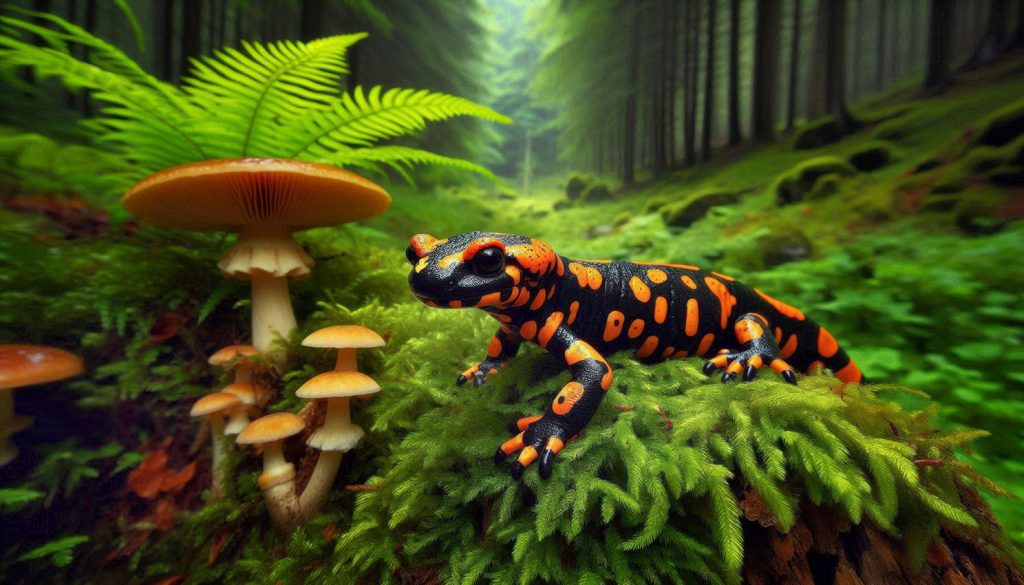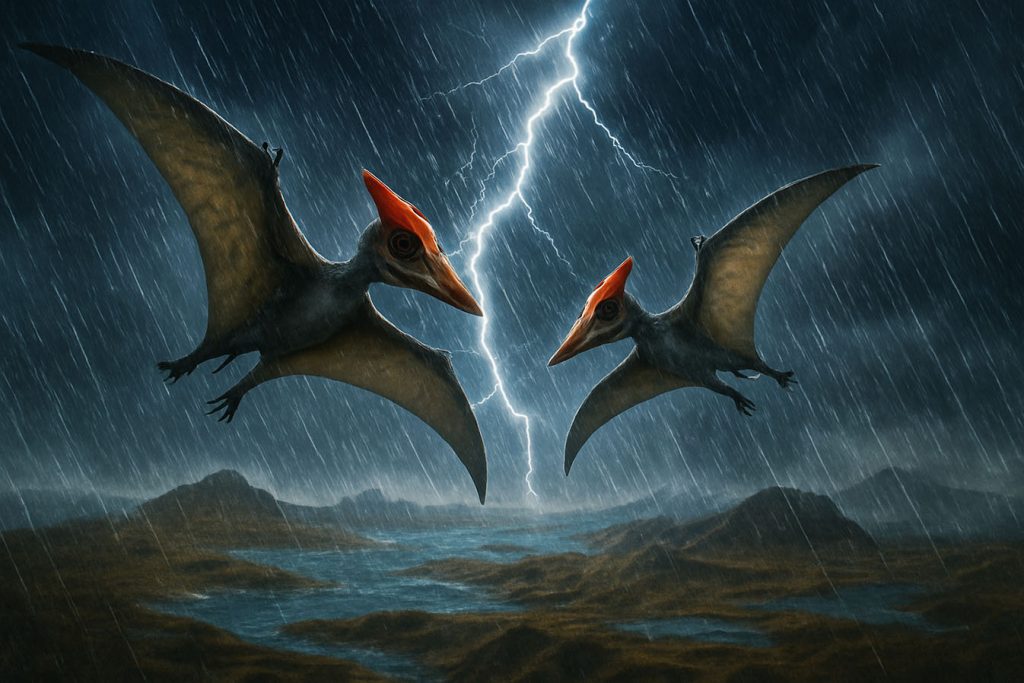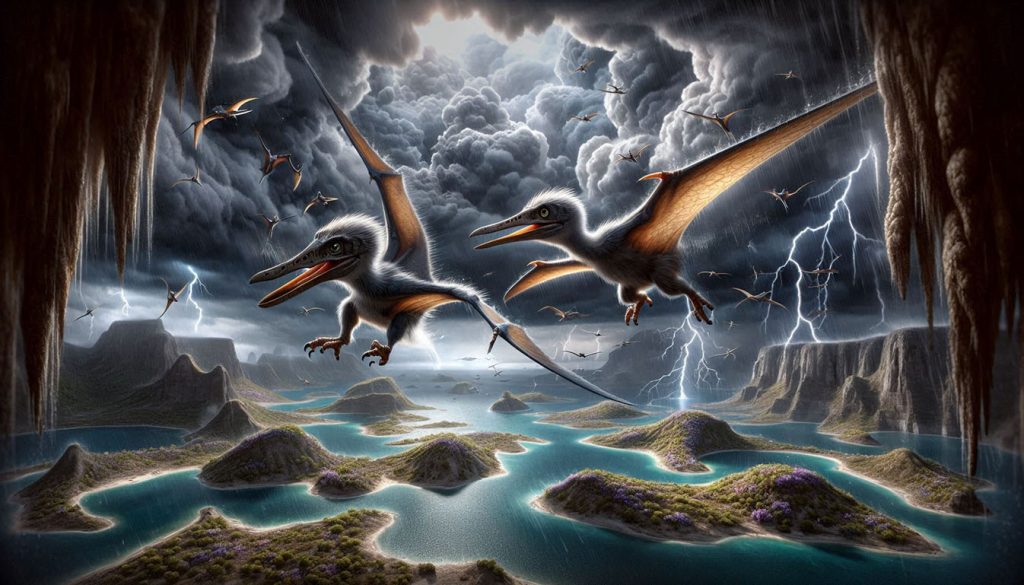Europe – Reptiles and Amphibians

Digital illustration – Fire Salamander, Salamandra salamandra
Pterosaurs and Storms
October 2025 Highland Scotland has just been battered with one of the most severe storms in recent records and one which has come earlier than typically in the year. The tens of thousands of houses without power have now had their electricity supply restored after a very real reminder of just how dependent we all are on staying powered up and staying connected. Being concerned and vulnerable to the weather is nothing new, it’s something we share with Pterosaurs from millions of years ago and they had more to be frightened of than having to do without the internet for 36 hours.
Travel back to around 150 million years ago in what is now part of Southern Germany and archaeologists have for some time excavated fossils, which have confirmed that the area referred to as The Upper Jurassic Solnhofen Archipelago was a population centre for Pterosaurs, the giant flying reptiles from the age of the dinosaurs. It is also believed to be a time of severe weather and extremely intense storms and the flying reptiles, which varied in size but included species with wingspans up to 10 feet (3 metres), would have had to have coped with the conditions just as wildlife has to manage with bad weather today.

Digital illustration
So, picture the scene, it is 150,000,000 BCE and a storm is coming. Two Pterosaurs spread their massive four inch (10cm) wings and take off, possibly to fly somewhere for shelter. Yes, these are neonates, they are only just hatched and they are that small, their total wingspans are eight inches (20cm) each and yet it is now believed that they could fly even when they were that young, weeks at most. The flight does not go well, there is no sign of impact trauma but both sustained fractures of the humerus, for humans the upper bone in the arm. This is presumed from the absence of trauma and the similarity to known wind strength fractures in birds and bats to be from the wind forces alone and must then be thought to have fallen in to the sea and drowned, where they sank to become rapidly covered by the mud sediments stirred up by the storm meaning they were very well preserved when their fossils were discovered. There is also reason to think small, almost baby, Pterosaurs will be more intact in the fossil record than adults.
The world and the weather can be a threat, something all living creatures have had to contend with from the dawn of time. We have names for the strongest storms, Pterosaurs probably did not. It is just possible though that if our two ill fated youngsters were together when events began that they looked at each other before they took off, and by sounds, movements or simply shared consciousness, exchanged the thought ‘Oh no, not another one of those’, when they saw the clouds gathering on the horizon.

Digital illustration
Photographs, illustrations and words ©Nick Sidle, all rights reserved